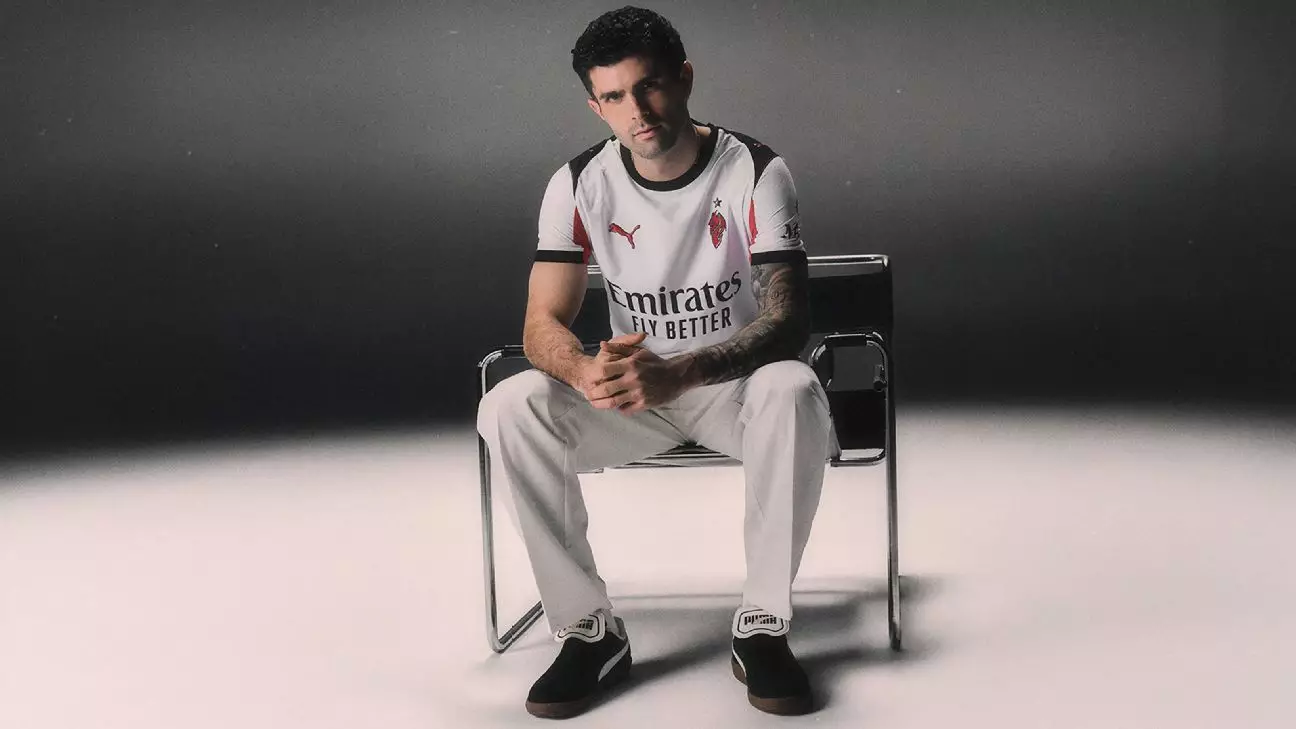AC Milan’s latest away kit presents a compelling blend of tradition and modern aesthetics, a testament to the club’s deep-rooted history and their desire to connect with fans on an emotional level. At the core of this design lies the iconic “Diavoletto” mascot, a symbol that has quietly haunted the club’s legacy for over a century. By reintroducing the vintage crest, Milan emphasizes a sense of continuity and pride, anchoring their identity in the past even as they strive for future greatness. Yet, this homage isn’t merely nostalgic; it’s a statement of resilience—acknowledging the turbulent chapters like the early 1980s when the club faced disgrace yet emerged stronger.
While the jersey’s color palette is traditional—clean white with subtle red and black accents—the overall execution feels surprisingly minimalist, bordering on austerity. The sparse design, with straightforward blocks of color, suggests a conscious retreat from flashy embellishments, focusing instead on the purity of Milan’s signature hues. This simplicity can be seen as an effort to let history speak for itself rather than drown in visual noise, underlining the timeless elegance that has defined the club for decades.
Symbolism and Controversy: The Return of the “Diavoletto”
The reintroduction of the classic crest, particularly the stylized “Diavoletto,” carries layered symbolic weight. The devil mascot has long been intertwined with Milan’s identity, representing a fierce spirit and relentless ambition. Its appearance on the jersey signifies a nod to the club’s resilience through years of ups and downs. Ironically, this emblem was last seen in a more controversial chapter of Milan’s history during the match-fixing scandal of the early 1980s, specifically tied to the Totonero scandal. The timing of its revival invites discussion—are Milan’s designers deliberately referencing a troubled past to highlight their triumph over adversity? Or does this homage risk romanticizing a dark episode?
Especially when employing such a vivid symbol from the club’s archives, there’s an inherent tension between honoring heritage and risking nostalgia that might feel disconnected from Milan’s current lofty ambitions. Yet, it’s undeniable that this mascot stirs strong emotional reactions among fans, making it an effective rallying point in a fiercely competitive league landscape.
Marketing and Style: A Step Forward or Back?
The image of USMNT star Christian Pulisic confidently modeling the kit further underscores the club’s commitment to positioning this release as a symbol of renewed vigor. However, critics might argue that the overall design echoes early 2000s sportswear—an era often associated with uninspired, mass-produced training gear rather than high-end football aesthetics. The Jersey’s plain design, combined with its somewhat “knock-off” aesthetic, raises questions: Is Milan prioritizing heritage over innovation? Or simply settling for a safe, cost-effective approach that lacks the elegance of their previous, more refined away jersey?
This raises the broader issue of Milan’s branding strategy—balancing respect for history with modern expectations of style and premium quality. While the kit pays homage to a storied past, it risks falling short of the boldness that the club’s identity demands. Critics could see this as a missed opportunity to elevate their visual language, especially considering the club’s recent ambitions to re-establish themselves as football’s style leaders.
In essence, AC Milan’s new away kit is a provocative mix—a nostalgic nod to their roots, yet it stirs debate about relevance and evolution. Whether it becomes a cherished collector’s item or a fleeting fashion statement, it undeniably reflects a club that is unafraid to revisit its past and reframe it in a contemporary context.

